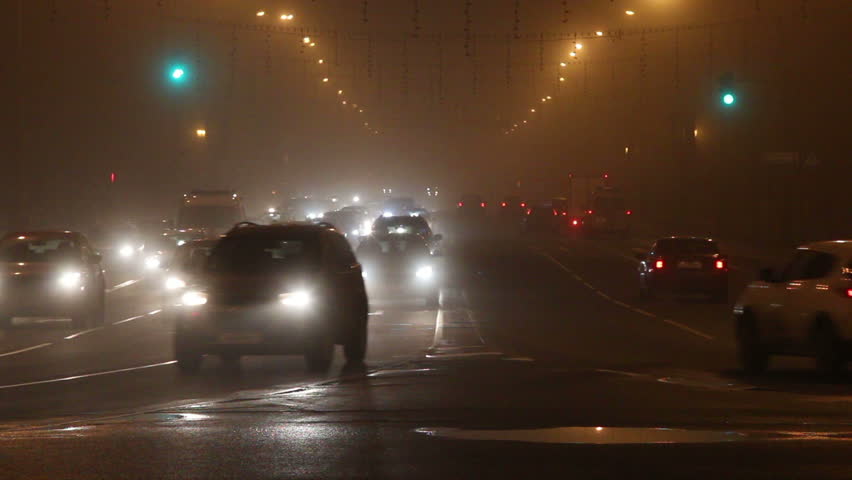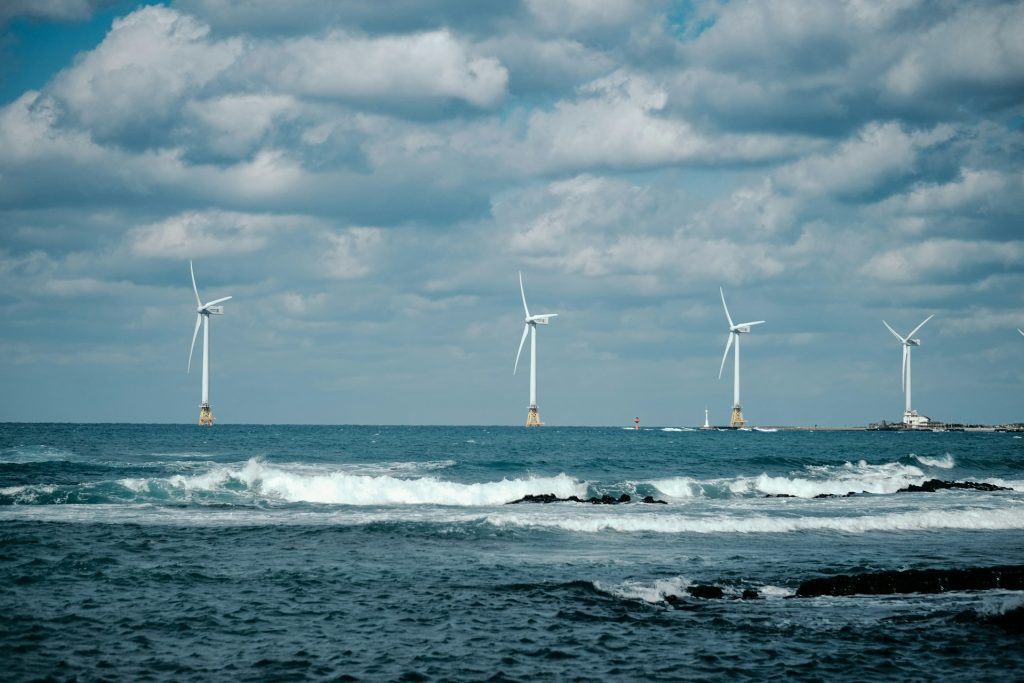Consciousness and the Combustion Engine
Featured Image | by Zach Street
This article is possible through a collaboration with CCC19—Climate Change and Consciousness: Our Legacy for the Earth, at the Findhorn Foundation, North Scotland, April 20–26, 2019. The event will feature some of the clearest and most passionate voices for the Earth ever gathered together in one place. Kosmos is an official hub for CCC19.
Introduction
Getting to zero emissions by 2050, as the IPCC Report demands, requires a collective detox from our addiction to oil. We are in the midst of a global overdose. We need to enter a universal treatment center with consciousness as the lead therapist.
Environmental Attorney Robert Yuhnke, who is developing the transportation policy position for the U.S. Climate Action Network, and Stephanie Mines, a neuroscientist and the convener of CCC19, have a conversation about how to come clean from our addiction.
What We Know About How Humans Are Changing the Climate
 Robert | Thirty years ago, scientists warned that adding CO2 and other heat-trapping gases to our atmosphere would warm the planet and disrupt the stable climate system that has supported the development of agriculture and the evolution of human civilization for the last 8000 years. Now, those changes predicted a generation ago are happening: more massive floods; more powerful hurricanes; expanded tornado zones; hotter and longer droughts that cause crop desiccation, forest die-off, and unstoppable firestorms; ocean warming that has bleached more than one-third of the coral reefs; and ocean acidification that threatens the survival of all shell-dwelling critters, thereby putting the entire marine web of life at risk.
Robert | Thirty years ago, scientists warned that adding CO2 and other heat-trapping gases to our atmosphere would warm the planet and disrupt the stable climate system that has supported the development of agriculture and the evolution of human civilization for the last 8000 years. Now, those changes predicted a generation ago are happening: more massive floods; more powerful hurricanes; expanded tornado zones; hotter and longer droughts that cause crop desiccation, forest die-off, and unstoppable firestorms; ocean warming that has bleached more than one-third of the coral reefs; and ocean acidification that threatens the survival of all shell-dwelling critters, thereby putting the entire marine web of life at risk.
Stephanie | Thirty years ago, I was pregnant with my second child. Less than a year prior, I had completed my doctorate. I felt like I was starting all over again with a new career and a baby on the way. Climate change never crossed my mind and, as far as I could tell, none of my friends, family, or clients were thinking about it. Jumping into my car whenever I had to go anywhere was a sign of my freedom. I was close enough to town to walk there for meetings and errands, but time was always tight with a bustling practice and children. I and the people in my world chose to be completely unconscious of how we had been manipulated into believing that each one of us had to have our own vehicle, and that we needed it to do everything quickly in our important, busy, and individually-focused lives. We could afford it, so why not?
Robert | Climate change consequences arrived sooner, and are more severe, than scientists anticipated two decades ago. An ice-free Arctic Ocean was not expected for another generation, but likely will occur this summer. Massive melting of Antarctic glaciers was not expected for a half-century or more, but is happening now. Damage from climate-related events in the U.S. alone exceeded $300 billion in 2017. The Climate Assessment released by 13 U.S. agencies in December 2018, reports that damages from climate disasters soon will routinely exceed $500 billion annually, contributing to a significant contraction in the national economy.
Many of these effects were not expected to occur until after the global temperature had warmed at least 2 degrees (C), but, to date, the global average has climbed only 1.1 C since the beginning of the industrial age. Heeding warnings that a rise of 2 C might result in a runaway climate catastrophe beyond human intervention, global leaders at the 2015 Paris Conference asked the International Panel on Climate Change (IPCC) to determine what must be done to limit the increase to 1.5 C.
Stephanie | Now that daughter, who I was carrying in my body thirty years ago, has launched a career and is entering the relationship that may be her soul partnership. Her life is blossoming, but due to my ignorance and blindness, climate change is disappearing her future. While I tried to keep her clean and well fed, and educate her and prepare her for life, I was completely ignoring the devastation that I was contributing to as I chauffeured her from one event to another, from one class to another, to and from play dates and lessons and swim meets and overnights. I was raising my children and counseling my clients in total ignorance of what we were doing to our world. Like a blindfolded captive, I was erasing the future.
What Must Be Done to Stop a Runaway Climate Catastrophe?
Robert | In October, 2018, IPCC reported that because no notable progress had been made in reversing greenhouse gas emissions, it might be too late to avoid exceeding a rise of 1.5 C. But if some of the unknowns work out in our favor, it might be possible. If CO2 emissions are cut to net zero by 2050, with half of those reductions achieved by 2030, AND if a large portion of the land surface currently dedicated to raising beef and other domestic animals is reforested to grow the planet’s capacity to remove CO2 from the atmosphere, we might not cross that threshold. To achieve these emission targets, almost all energy uses that rely on the combustion of fossil carbon must be stopped or converted to zero emission technologies by 2050. Half of those reductions must be achieved within the next 11 years to avoid total atmospheric loadings that will drive temperatures above the 1.5 C target over the next 1000 years while we wait for forests and phytoplankton in the oceans to restore stability to the climate by extracting CO2 from the air.

Stephanie | What qualifies as an addiction? It is insistent, obsessive repetition that is hardwired into the brain. Pain is experienced if the satisfaction center that is the goal of that repetition is not reached. Other options for satisfaction are nullified. In all cases, the original impulse for satisfaction was innocent, but having been completely defeated, it has been forgotten. It takes considerable effort to remind the brain of what it wanted originally: love, connection, peace, and joy. Neuroplasticity is fueled by the potential to replace the compensatory satisfaction with something real. Then it is possible to live past the pain and remember what it feels like to make another choice. This is a change in consciousness. It is synonymous with coming out of addiction.
Transport As an Example of the Challenge We Face
Robert | Worldwide, over one billion cars and trucks, tens of thousands of aircraft, and many thousand ships at sea and railroad locomotives together combust roughly 50 million barrels of the 100 million barrels of petroleum extracted from the Earth EVERY DAY. The petroleum burned to provide the motive power to move people and goods accounts for nearly one-quarter of all CO2 emitted daily into the atmosphere. In the U.S., where coal burned to generate electric power was once the largest source of CO2, emissions from power generation have been reduced during the last decade by switching to natural gas, wind, and solar. Now, transport—a sector of the economy where emissions are growing—is the largest source of CO2, at 35 percent. The IPCC global emission targets cannot be achieved without reducing transport emissions to net zero by 2050.
 The climate crisis demands that the use of fossil fuels in the transport sector must end. This calls for the accelerated replacement of fossil fueled (FF) internal combustion engines (ICEs) throughout the transport sector. Electric and hydrogen powered vehicles emit no greenhouse gasses (GHGs) from the vehicles themselves. And, zero emissions are achieved if the electricity or hydrogen is generated using renewable sources of energy.
The climate crisis demands that the use of fossil fuels in the transport sector must end. This calls for the accelerated replacement of fossil fueled (FF) internal combustion engines (ICEs) throughout the transport sector. Electric and hydrogen powered vehicles emit no greenhouse gasses (GHGs) from the vehicles themselves. And, zero emissions are achieved if the electricity or hydrogen is generated using renewable sources of energy.
Recently developed battery technology is resulting in commercially available zero emission vehicles (ZEVs)—passenger vehicles, vans, transit and school busses, and passenger and freight rail. New electric pick-up truck and 18 wheeler models were commercially introduced in 2018, and Tesla anticipates releasing a long-haul truck by 2020. Hydrogen fuel-cell vehicles also are in use in California, Europe, and Asia. The challenge is to deploy these technologies quickly enough to replace one billion ICEs by 2050.
Currently, more than 60 million new passenger vehicles and a few million new trucks are sold annually worldwide. In the next 20 years, 1.5 billion new vehicles will be produced—both to replace the existing global fleet and to add vehicles to meet growing demand. As of 2018, less than one percent of global new vehicle sales are ZEVs. But to meet the IPCC’s zero emission target and replace all ICEs by 2050, 100 percent of sales must be ZEVs within a few years.
This could be accomplished if every new car buyer insisted on buying a ZEV. Public demand, if consciously guided by the choice needed to protect our planetary home, could transform the world’s vehicle population by 2050. But that is not happening here, either because people are not making conscious choices or their choices are not guided by planetary consciousness.
We should look to Norway where 30 percent of new vehicle sales are ZEVs, and 40 percent of miles driven are in ZEVs. How has Norway created broad public demand for ZEVs? It’s investing in a ubiquitous electric vehicle (EV) charging network where power is often free; creating tax benefits that offset the incremental purchase price of a new EV; and setting 2025 as the deadline for ending the sale of new ICEs. Clearly, the public will respond if the price signals are set.
Capital costs of new EVs are dropping rapidly as advances in battery technology reduce their cost and weight. Bloomberg estimates the cost of battery EVs will be comparable to new ICEs by 2023–2025; California estimates comparable costs by 2030. Soon, special tax incentives may not be needed to make EVs price competitive. But competitive pricing will shift only some market demand; not 100 percent. To achieve the IPCC targets, the sale of all new ICEs must end within the next few years. Can this change in attitudes be accomplished in our democracy soon enough to save the planet?
Stephanie | The brain never stops evolving. My entire focus in life has been on the human experience of the resolution of shock and trauma, individually and in community. I have seen over and over again the enormous human capacity to change. Just recently I was asked to help resolve the conflict between the head of an organization and a staff member who felt abused by him. For hours, the CEO defended himself saying that the charges of abuse were impossible. The incidents had never occurred. He was convinced that the staff member was fabricating the events. Then, in the last 15 minutes of our meeting, it dawned on him that he had been blind to the impact of his words. He had been culturally insensitive. He had failed to see how he had put a roadblock on someone’s path by not paying attention; by being self-serving. In that moment he woke up.
 Like this CEO, we can still wake up while there is just enough time. A big shift can happen in just a few moments when we reroute our attention and open to new ways of reaching satisfaction. I can face the truth of what I contributed to our painful reality and make a new choice now. If everyone reading this becomes a vehicle of change by only driving electric cars, inspiring someone else to do the same, and demanding that governments act to require automakers to meet the needs of a planetary system in crisis, we will be many steps closer to thriving in a climate-changing world.
Like this CEO, we can still wake up while there is just enough time. A big shift can happen in just a few moments when we reroute our attention and open to new ways of reaching satisfaction. I can face the truth of what I contributed to our painful reality and make a new choice now. If everyone reading this becomes a vehicle of change by only driving electric cars, inspiring someone else to do the same, and demanding that governments act to require automakers to meet the needs of a planetary system in crisis, we will be many steps closer to thriving in a climate-changing world.








I can relate to this article both as an unconscious contributor in my past life and see the need for change to EV’s. However, I am curious as to what will happen to all the current vehicles that required fossil fuels to be produced. Will it be possible for these vehicles and machines to be retrofitted to save an enormous amount of waste.